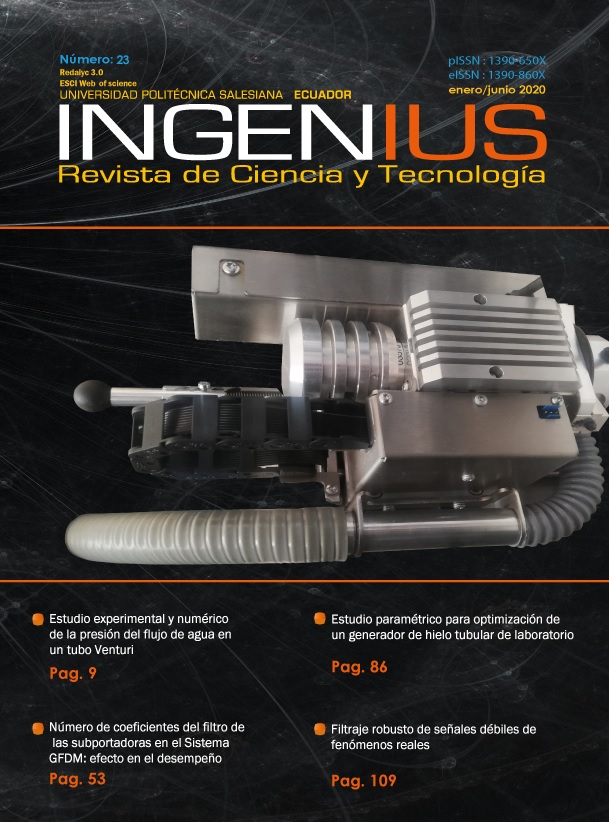Prediction of CO and HC emissions in Otto motors through neural networks
Main Article Content
Abstract
Keywords
prediction, pollutant emissions, carbon monoxide (CO), non-combustion hydrocarbons (HC), diagnostics, neural networks prediction, pollutant emissions, carbon monoxide (CO), non-combustion hydrocarbons (HC), diagnostics, neural networks
References
[2] A. Restrepo, S. Izquierdo, and R. López, “Estimación de factores que inciden sobre la contaminación ambiental generada por fuentes móviles en pereira,” Scientia et technica, vol. 1, no. 37, pp. 267–272, 2007. [Online]. Available: http://dx.doi.org/10.22517/23447214.4053
[3] X. Li, D. Sun, G. Lu, J. Krabicka, and Y. Yan, “Prediction of nox emissions throughflame radical imaging and neural network based soft computing,” in 2012 IEEE International Conference on Imaging Systems and Techniques Proceedings, July 2012, pp. 502–505. [Online]. Available: https://doi.org/10.1109/IST.2012.6295594
[4] M. Cortina, “Aplicación de técnicas de inteligencia artificial a la predicción de contaminantes atmosféricos,” Ph.D. dissertation, 2012. [5] J. D. Martínez-Morales, E. R. Palacios-Hernández, and G. A. Velázquez-Carrillo, “Modeling and multi-objective optimization of a gasoline engine using neural networks and evolutionary algorithms,” Journal of Zhejiang University SCIENCE A, vol. 14, no. 9, pp. 657–670, Sep 2013. [Online]. Available: https://doi.org/10.1631/jzus.A1300010
[6] T. Fontes, L. M. Silva, S. R. Pereira, and M. C. Coelho, “Application of artificial neural networks to predict the impact of traffic emissions on human health,” in Progress in Artificial Intelligence, L. Correia, L. P. Reis, and J. Cascalho, Eds. Berlin, Heidelberg: Springer Berlin Heidelberg, 2013, pp. 21–29. [Online]. Available: https://doi.org/10.1007/978-3-642-40669-0_3
[7] J. D. Martínez-Morales, E. R. Palacios-Hernández, and G. A. Velázquez-Carrillo, “Artificial neural network based on genetic algorithm for emissions prediction of a si gasoline engine,” Journal of Mechanical Science and Technology, vol. 28, no. 6, pp. 2417–2427, Jun 2014. [Online]. Available: https://doi.org/10.1007/s12206-014-0535-2
[8] T. López Ortíz and A. Pacheco González, “Efectos de la contaminación atmosférica en la salud de las personas en la ciudad de cuenca,” 2015. [Online]. Available: https://bit.ly/32M8jnz
[9] J. Guadaluoe Almeida, “Modelación de emisiones contaminantes de fuentes móviles terrestres en Quito, Ecuador,” 2016. [Online]. Available: https://bit.ly/2qdvtG8
[10] P. León Bacuilima and C. Piña Orellana, “Predicción de emisiones contaminantes de gases de escape a través de la presión media efectiva empleando redes neuronales en motores de encendido provocado, cuenca,” 2018. [Online]. Available: https://bit.ly/2q2oTlT
[11] W. Contreras, J. Maldonado, and R. León, “Aplicación de una red neuronal feed-forward backpropagation para el diagnóstico de fallas mecánicas en motores de encendido provocado,” INGENIUS, 2019. [Online]. Available: https://doi.org/10.17163/ings.n21.2019.03



